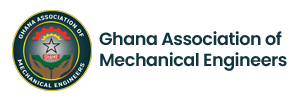Innovation is not reserved for the few, it is something
we will all need to embrace if we are to move forward.
Innovation describes the development and application of ideas and technologies that improve goods and services or make their production more efficient. It is an essential driver of economic progress that benefits consumers, businesses and the economy as a whole.
Innovation does not equate to invention, it simply mean making slight changes to a business model or environment to ensure the delivery of products or services. Innovation helps predict how the market will change, providing solutions before customers even realize there’s a problem.
- Why do we need innovation?
Ans: The major benefits of innovation is its contribution to economic growth. It leads to higher productivity, meaning that the same input generates a greater output. As productivity rises, more goods and services are produced making the economy to grow. - How innovation leads to growth?
Ans: New ideas and technologies are developed and applied, generating greater output with the same input. More goods and services are produced, stimulating wages and business profitability. - How does innovation take full effect?
Ans: It usually starts on a small scale, for the full benefits of innovation to be realized, it is necessary for it to spread across the economy and equally benefit companies in different sectors and of different sizes. Experts call this process the diffusion of innovation.
Information and Communication Technology (ICT)
ICT is an umbrella term that includes any communication device or application,
encompassing: radio, television, cellular phones, computer and network hardware and software, satellite system and so on, as well as the various services and applications associated with them, such as videoconferencing and distance learning.
As mechanical engineers, we design things like robotics, factory automation systems and machines of all types. In eras past, we spent our days with pencils, erasers and drafting boards but in the information age, we get the job done faster and more efficiently using computer aided design software programs and plotters.
Simulation software help reduce the amount of prototypes and physical testing needed and it therefore reduces costs and speeds up the design problems. Simulation software help reduce the amount of prototypes and physical testing needed and it therefore reduces costs and speeds up the design problems.
There is an opportunity and necessity to create something new and better for our learners, both students and educators. For this to happen, the word “innovation” must be more than a buzzword in education- we will have to know what it is, what defines it, and what it looks like in practice.
We should be scared for reducing teaching to simply letters and numbers. We place such an emphasis on scores because of political mandates and the way teachers and schools are evaluated today, seems we’ve forgotten why teachers exists: to change-improve-lives. We believe the essence of education is to develop learners and leaders who will create a better present and future.
Leaders refer to people who have influence over and can make an impact on the world. The term learner is not limited to students; educators must have the opportunity to develop both as learners and leaders. Before we can develop these traits in our people, we must empower them; we must inspire innovation, rather than demand compliance.
Building a capability to organize and manage Innovation and ICT will be a great achievement but we first need to consider where and how they will be implemented to our strategic advantage.
Two key themes are important;
- Our overall strategy and how ICT and Innovation will help us get there.
- Knowing the direction we are going and whether we have the strength.
Forms of Innovation
- Product Innovation; changes in the things (product/service) which an organization offers.
- Process Innovation; changes in the ways in which they are created and delivered.
- Position Innovation; changes in the context in which the products/ services are introduced.
- Paradigm Innovation; changes in the underlying mental models which frame what the organization does.
Responsibility of ICT and Innovation Team
- The Team will participate in meetings and voicing concerns as well as suggestions for improvement about the role of ICT and Innovation to the mechanical engineering profession and national growth.
- The Team will coordinate training or give ICT support to members to help improve the services we provide as professionals.
- The Team will work with the Mentorship Team to develop a guide to help infuse
innovative practices in the junior and senior cycles and introduce ICT curriculum
which will be incorporated into some of the courses like technical drawing taught in the junior and senior cycles. - Perform such other duties and responsibilities as may be assigned to the Team from time to time
- The only way to discover the limits of the possible is to go beyond them into the
impossible. Arthur C. Clarke - You can’t solve a problem on the same level that it was created. You have to rise above it to the next level. Albert Einstein
- If you want something new, you have to stop doing something old. Peter F. Drucker
- Innovation is seeing what everybody has seen and thinking what nobody has thought. Dr. Albert, Szent-Gyorgyi
- Learning and innovation go hand in hand. The arrogance of success is to think that what you did yesterday will be sufficient for tomorrow. William Pollard


